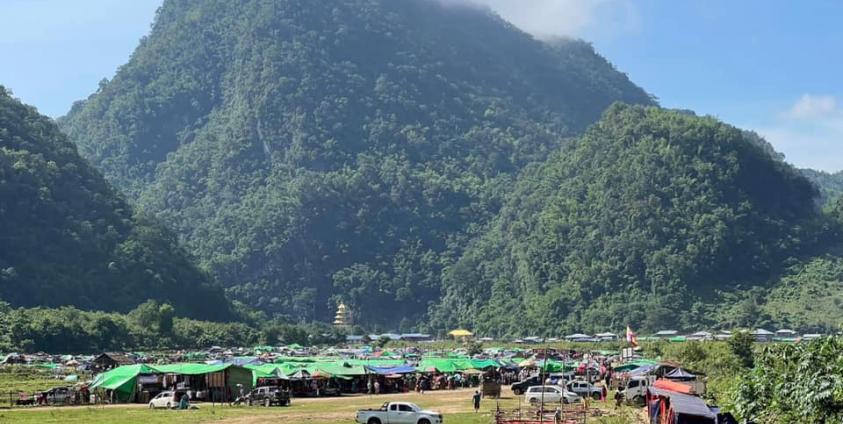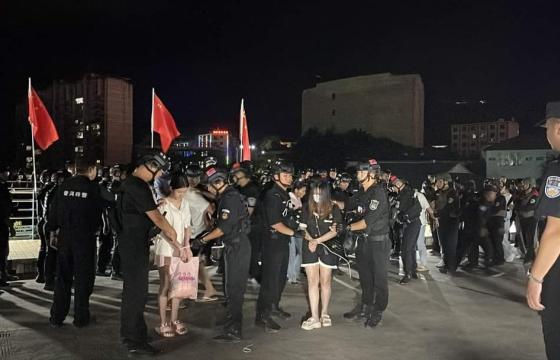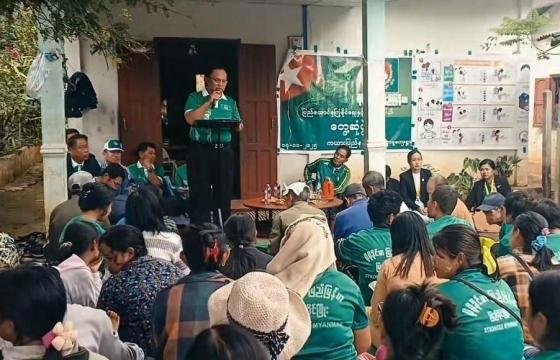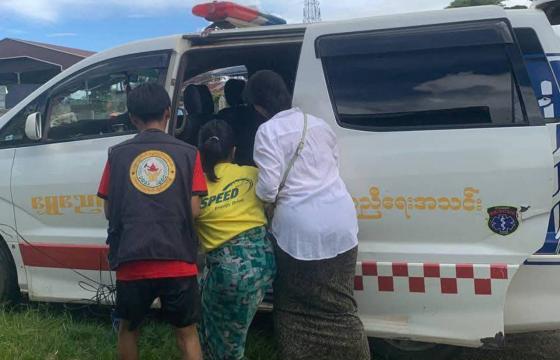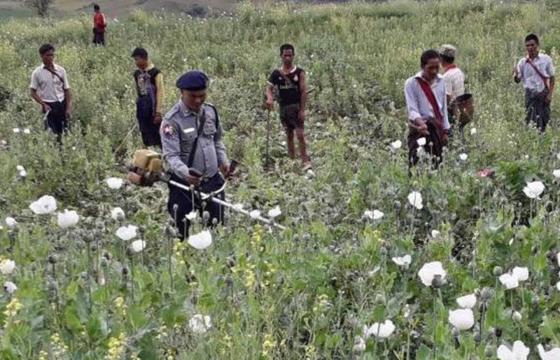Sai Wansai — This is the second well-known solitude meditation retreat of Venerable Shan Monk Phra Khuva Boonchum due to end on 1st August 2022 and will re-emerge from the Cave of Mong Kyat, Shan State, which he has started on 28th April 2019.
The length of the meditation retreat has been planned for three years, three months and three days by the venerable monk.
“It is with great pleasure that we welcome our generous Dhamma friends to join with us Chanting, Meditation, refresh his teaching and Sharing merits in order to accumulate meritorious during this special moment of Phra Khuva Boonchum emerging from the Cave,” writes the Singapore-based Oxford Buddha Vihara.
Phra Khuva Boonchum other notable and well-publicized meditation retreat was in 2010, which took place in the Rajagriha cave in Ngao district, Lampang, a 20-km distant from Lampang-Ngao highway for a quarter and 3 years that was concluded on 20th July 2013.
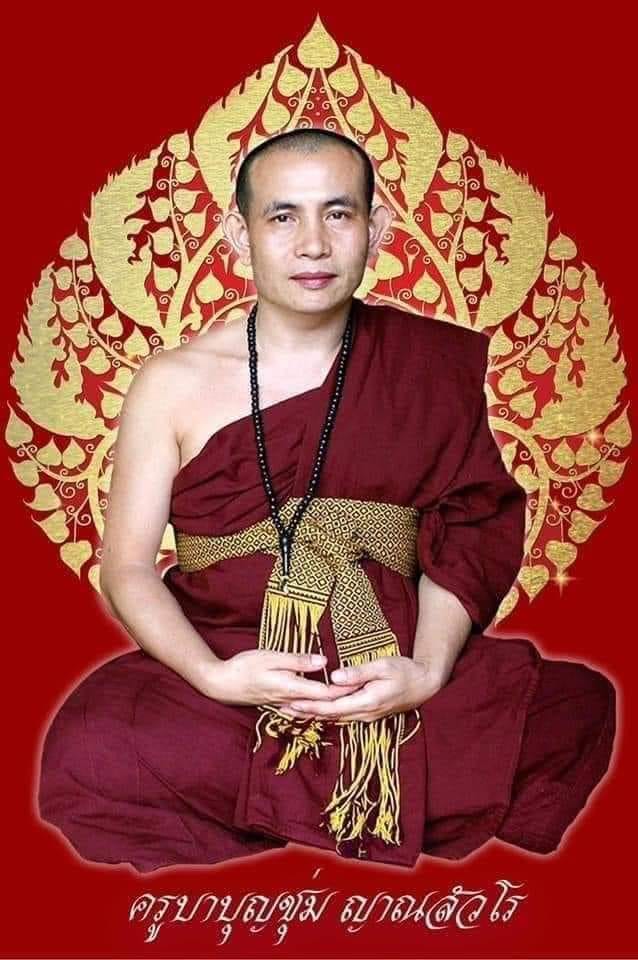
Venerable Shan Monk Phra Khuva Boonchum due to end on 1st August 2022 and will re emerge from the Cave of Mong Kyat Shan State which he has started on 28th April 2019.
Although these were the two well-known publicized retreats he has been practising the cave isolation and meditation ever since he was a novice, according to a blogspot run by Sangha of Khuva Boonchum Buddhagaya Tai Temple Budhagaya, Bihar, India.
Biography of Phra Khuwa Boonchum
According to the blogspot of Sangha of Khuva Boonchum Buddhagaya Tai Temple Budhagaya, Bihar, India:
- The Most Venerable Khuva Boonchum, Nyanasamvaro is one of the best well-known Theravada forest meditation monks in the last 20th and the beginning 21st century. He is famous not only in Myanmar but also in several Buddhist countries such as Thailand, Lao, Cambodia, Taiwan, Singapore, Bhutan, Nepal, Sipsongbanna, China and some other Buddhist countries, etc.
- He originated from Nong-wo Village, Mae Chan District, Chiang Rai Province in Northern Thailand. His parents, Loong Kham Lah and Mae Saeng Lah, were peasant, originally from Maung Yong in the eastern part of the Shan State; he is the eldest among the four children. Both of his parents have passed away.
- The Venerable Khuva Boonchum as he was an extraordinary child; after leaving school two year later he was ordained as a samanera, “novice”. After becoming a Samanera, he began to practice meditation at his 9 old age. He also learnt the dharma that based on the standardized Thai monastic curriculum of nak tham with an annual examination in the winter. But only after the first year, he stopped his study to begin learning directly from the well known forest meditation masters in Lanna, northern Thailand. Deeply inspired by their example, he has since adopted their way of life: observing a rains-retreat (vassana) up to four months in caves every year; building religious monuments such as pagodas; and preaching to the peasants in the villages.
- He began observing a rains-retreat in a cave when he was just 12. Since then, he has been observing rains-retreats, often in remote areas which include not just northern parts of Thailand but also the Shan State in Myanmar, Nepal and the Kingdom of Bhutan. His last rains-retreat as a samanera took place in Nepal. His stay in caves is by no means confined to the rainy season; in fact, during the winter and summer, he often rests in various caves meditating and reading. The solitude of the caves enables him to devote his times to both the samatha and the vipassana meditation and reading Holy Scriptures related to meditation, for example, the Patisampidamagga and other contemporary works compiled by well known Buddhist masters such as Ajahn Man and Buddhadasa Bhikkhu.
- It was during that early time in his life that he started preaching and led the renovation of pagodas. At the age of 12, he renovated a pagoda situated on the top of a hill, in a village, Ban Keao, near Maesai. He has since build or renovated many pagodas throughout the Mae Khong and Salween River regions. Among those he has recently built is a pagoda in Hsenwi, northern Shan State; this pagoda has a unique local architectural style. At present, he is building 38 pagodas over four hills near Ban Keao in Mae Sai. The newly building temple, which built in 2006 that led by him the Khuva Boonchum Buddagaya Tai Temple, Buddhagaya, bihar, India also was included.
- One of those places he developed at his tender age is Mong Phong, Village in Tachilek that situated on the bank of Mae Khong River in the Golden Triangle areas where the boundaries of Thailand, Lao and Shan State, Myanmar coinciding areas. At the 13 years of age, he started meditating there that the forested area has now become a forest meditation centre well known throughout the regions. It can be reached by land as well as by boat. At the age of 21, he received his higher ordination in 9 May 1986 at Wat Suan Dok, Chiang Mai, Thailand.
- As to his preaching, the topics cover the virtues of generosity, non-violence and meditation. He himself demonstrates a great example of generosity; all the offerings that the devotees made to him are in turn offered monks and laypeople who come to meet him. A generous lady devotee who offered the new pinnacle of the great Shwedagon Pagonda in Yanon remarks that she has never seen either a monk or a layperson as generous and detached as the Maing Phone Sayadaw.
- His teaching on non-violence is delivered through the promotion of the value of the five ethical codes of conducts (sila), vegetarianism, non-discrimination and the cultivation of metta-bhavana. As a result, all the different dialect groups and nationalities in the Mae Khong and Salween River basins identify him as their spiritual master. A scholar from Australia writing in the Cambridge Journal of South-East Asia observes that the people of Lanna consider Khuva Boonhum as maintaining the tradition of the “Yuan holy men” founded by Khruva Srivihai. In the meantime, the government of Myanmar also offered him a title saddhammajotikadhaja for his work in the propagation of the dhamma. Amazingly he also speaks all the dialects of the Mae Khong and Salween River basins and understands the subtle differences in their cultures, making his teaching easily accessible and highly relevant to a great many of them. Besides the dialects of those regions, he also speaks central Thai, Bhutanese and some Chinese which extends the accessibility of his teaching even further.
Enlightened Phra Khuva Boonchum
In the afternoon session of 21 July 2013 Khuva made a special announcement, following his emergence from Rajagriha cave in Lampang, on his spiritual achievement: “To be honest, I have archived a higher level of attainment in the Buddhist practice. This is not a ‘boasting’ at all,” quoting the afternoon session of Khuva Bonchum’s sermon in Shan/Tai language. The crowds responded with cheers “sadhu” three times, according to Shan Herald Agency for News (SHAN) report of 17 August 2013.

Thousands of people reach to Mong Kyat Cave to welcome and to have audience with Phra Khuva Boonchum on 1st August when he exit.
And as if to demonstrate his enlightenment he correctly predicted the fate of the 13 trapped Thai youth soccer players together with their trainer in the Tham Luang cave complex in Chiang Rai in July 2018, which was the Thai national and international top news during that period.
Khuva visited the Tham Luang cave complex in Chiang Rai three times and each time, he held religious ceremonies and prayed for the well-being of the trapped Thai youths and their trainer. Thai top generals and officials welcomed him inside the cave, where he held the religious rites.
Reportedly, the day after his second visit, the rain that had been pouring down in the area for days stopped. Many Thais believe the monk’s intervention prompted the abrupt stop of the rain.
Upon his departure, the monk told Thai journalists, “They are all still there; they will be found in one or two days,” according to Thai media.
Eventually, between 8 and 10 July 2018, as predicted the Thai youths together with their trainer were found and rescued by an international team.
While the rescue was in process the king of Thailand has offered robes to Phra Khuva Boonchum, reported the Thai media.
Khuva visited General Maung Aye, second to the top brass General Than Shwe until 2011, when he visited Naypyitaw in 2018 and also was paid a visit by Aung San Suu Kyi in 2017 during his first Naypyitaw visit.
Perspective
Thousands of people are expected to welcome and to have audience with Phra Khuva Boonchum on 1st August when he exit from Mong Kyat Cave, according to locals.
During emergence from the solitude meditation retreat in Rajagriha cave, Lampang, Thailand in July 2013 SHAN describe the scene as: “ The scenario seen on this mountain range are tens of thousands of people who gather around as if they were on pilgrimage. The ceremonies in which to honour and welcome Khuva take place for two days: one on July 20 and the other on 21. The first is to welcome Khuva Bonchum breaking his last moment of non-communication meditation in solitude and the next is to renew ‘life extension’ according to northern Thai tradition.”
“Communities who gathered here include Thai, Laotian, Bhutanese, Taiwanese, Singaporean, Korean, Japanese, Chinese, Yao, Palaung, Burmese, Shan and many other ethnics and nationalities with a single aim, to receive a “blessing” from Khuva. This event although a Buddhist one, some other religious believers also have come to visit and paying respect. It is a true transnational communal gathering which is unusual and amazing meeting of people around the world. Khuva Bonchum’s dhamma power has indeed touched upon across all the differences and national boundaries.”
The ending of Khuva Boonchum solitude meditation in Mong Kyat Cave and his emergence from it will no doubt be a pilgrimage-like occasion. And seen from the detailed preparation, as instructed by Khuva himself, it will be a spectacular one.
We could only hope that the prevailing sorry state of the whole country and the animosity of the two Shan armies waging war on one another won’t despair him to the point of leaving the country for good.
He once told the two Shan armies that if they could not end their conflict he would migrate to Bhutan and won’t return back. Because of his intervention, the two Shan armies stopped fighting for a while, but resumes the fight after only a year of hiatus, which has been ongoing until today.
Many are pinning the hope that he may be a peace-maker to help pull out the country from the brink of total collapse. But whether he will be given the opportunity to do so or he may rather choose to abandon the prevailing hopeless situation as he once told the two Shan armies is anybody’s guess.


